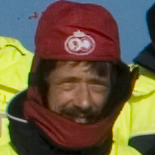Nutrients in Water Masses in the Atlantic Sector of the Arctic Ocean: Temporal Trends, Mixing and Links With Primary Production
[Published 22 July 2021]
Scientific Publications
Abstract
There is strong evidence of an increase in primary production (PP) in the Arctic Ocean (AO) over the last two decades. Further increases will depend on the interplay between decreasing light limitation for primary producers, as the sea ice extent and thickness decrease, and the availability of nutrients, which is controlled by, but not limited to, inputs from the Atlantic and the Pacific Oceans. While these inputs are the major nutrient sources to the AO, ocean vertical mixing is required to bring the nutrients into the photic zone. We analyze data collected in the Western Eurasian Basin (WEB) between 1980 and 2016 and characterize the nutrient climatology of the various water masses. We conclude that there were no significant trends in the concentrations of the two macronutrients that typically limit PP in the AO (nitrate and silicic acid, in the case of diatoms), except a decreasing trend for silicic acid in Polar Surface Water (PSW), which is consistent with the reported increase in PP in the AO. We suggest that the Whalers Bay polynya, located in the northwestern corner of Svalbard, may act as a mixing hotspot, creating patches of nutrient replenished PSW. These patches may then be advected to higher latitudes under the ice pack, later boosting PP upon release from light limitation or else, keeping a nutrient reservoir that may be used in a subsequent growth season. It is likely that this remaining nutrient reservoir will decrease as sea ice cover retreats and light limitation alleviates.

